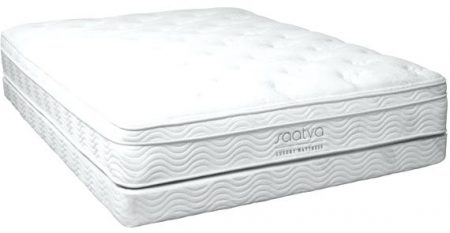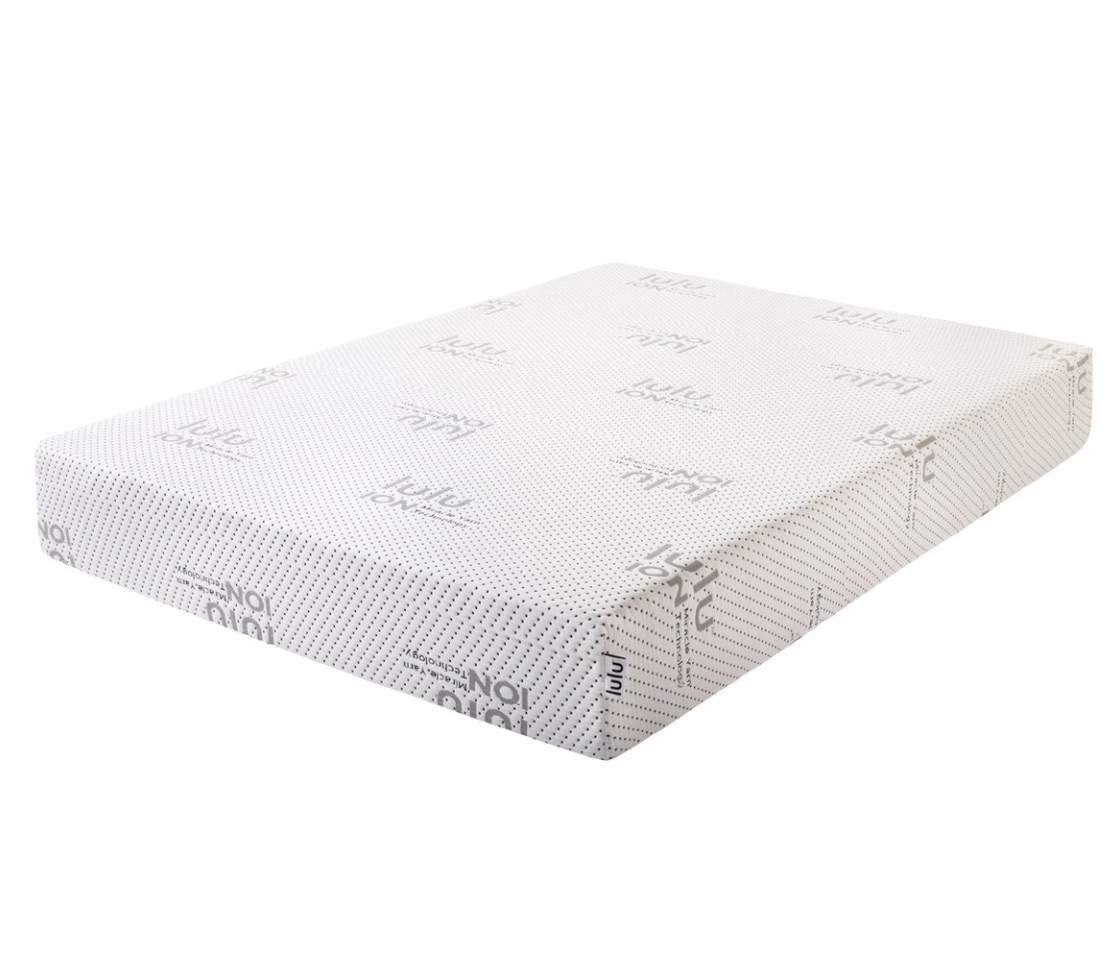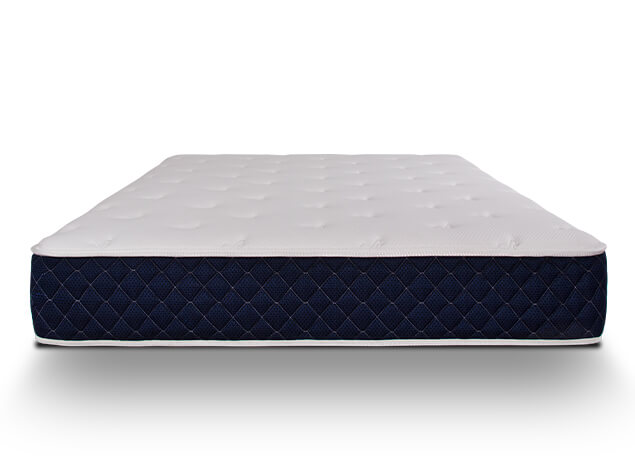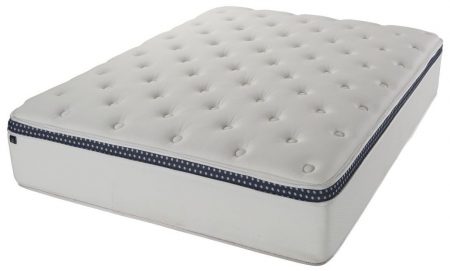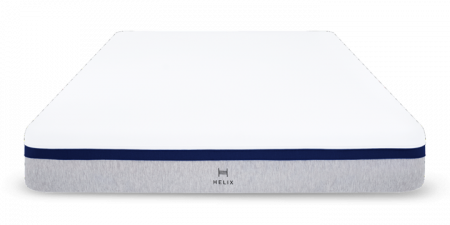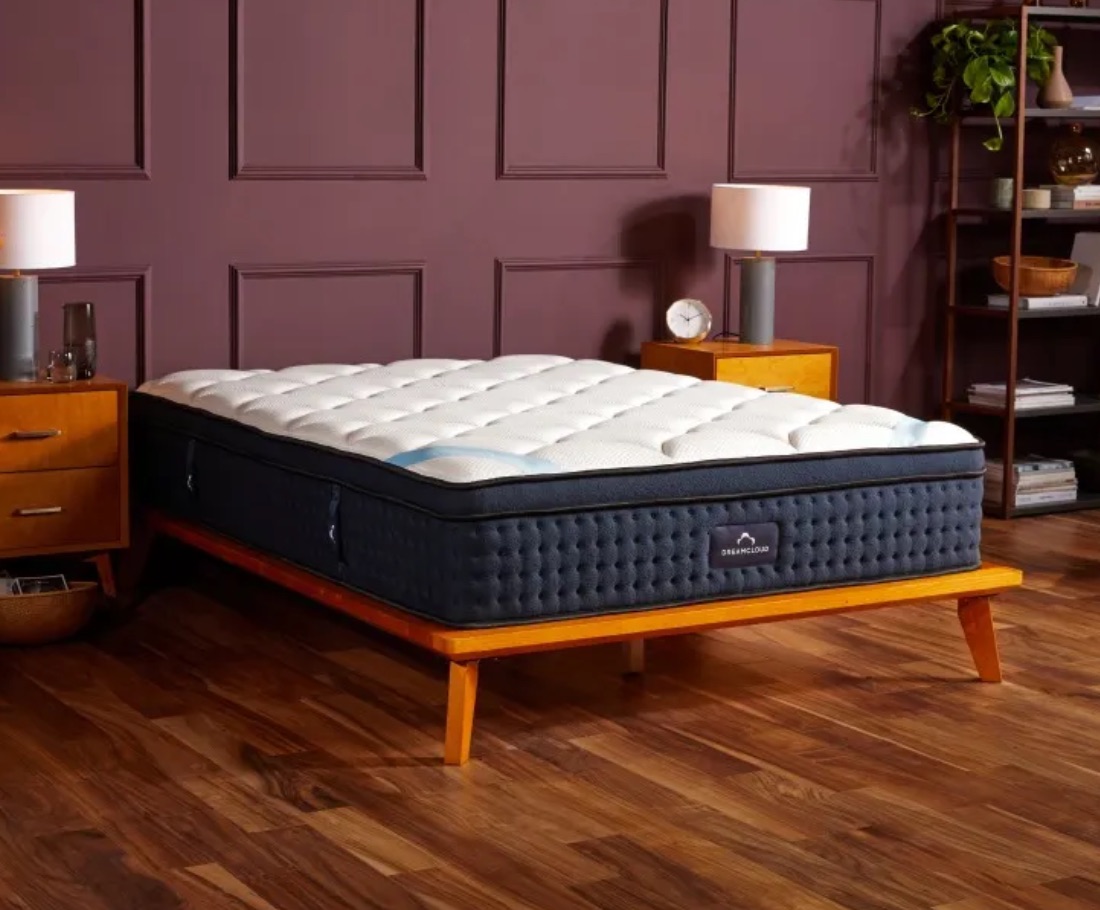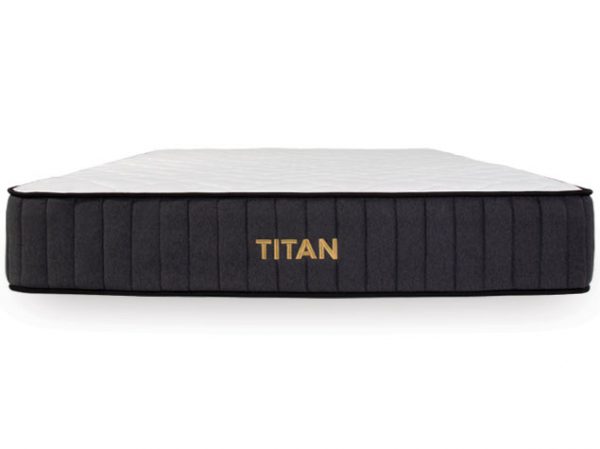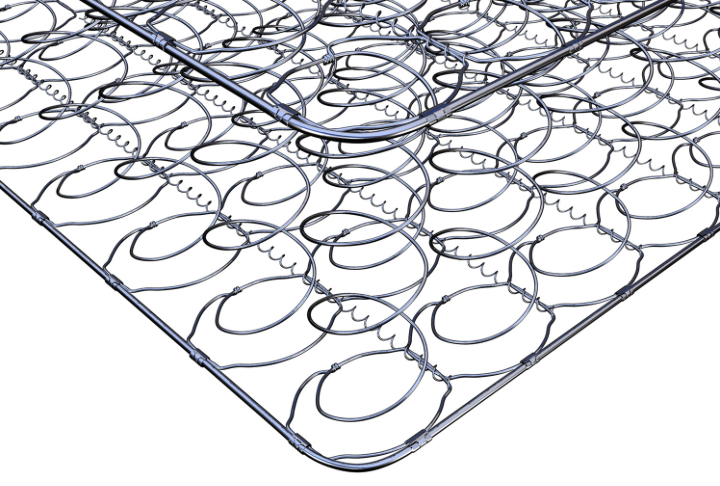Innerspring Mattress Construction
The term ‘innerspring’ does not refer to the entire mattress, but rather the support core. This innermost layer of a mattress is designed to provide spinal support and pressure relief for sleepers while also withstanding compression and preventing the mattress from completely collapsing.
The support core works in tandem with the topmost layer, or comfort layer, which is constructed from softer, more responsive material in order to provide a suitable sleep surface. Most innersprings have comfort layers made of polyfoam or memory foam.

Offset coils have an hourglass shape with a flattened, hinge-like bottom
An innerspring support core consists of metal springs, or coils, that are evenly spaced throughout the core to maximize support and ensure proper weight distribution. In most cases, coils are molded from tempered steel, which is considered more resilient than non-tempered steel or other metals.
Coils situated at the borders of a mattress are often reinforced with foam, webbing or other sturdy materials for added longevity and performance, since the edges of innerspring mattresses are more prone to sagging than the central area.
Today’s innerspring mattresses are distinguished by the type of coils, which fall into one of four different categories:
- Bonnell coils
- Offset coils, including double offset and freearm offset coils
- Continuous wire coils
- Pocket coils, also known as Marshall or encased coils
Bonnell Coils
Bonnell coils are the oldest coil type used today, and also cheaper and more widely available compared to other innerspring coils. Molded from tempered steel in an hourglass shape, bonnell coils are joined together with spiral-shaped wires known as helicals and often reinforced with thick, low-gauge wire. As a result, bonnells can withstand high levels of compression without shifting or falling apart.
You will often find bonnell coils in mattresses used in places that accommodate a steady stream of sleepers, such as hotels, dorms and nursing homes. Our Editor’s Pick Innerspring Mattress, the Saatva, uses bonnell coils.
Offset Coils
Offset coils are made of tempered steel, shaped like hourglasses and joined together with helicals. However, the bottom of an offset coil is straightened to create a hinging effect when the mattress is compressed. Two variations of the offset coil are also common.
- Double offset coils are straightened at both the top and bottom for extra hinging and more support.
- The free arm offset coil, on the other hand, is not joined with neighboring coils.
Offset, double offset and free arm offset coils are considered highly durable — and as a result, these mattresses tend to run on the expensive side.
Continuous Wire Coils
Continuous wire coils feature several rows of long, singular wires that are molded into circular shapes and joined by helicals on both sides. This creates a hinging motion that is similar to that of offset coils.
Although noted for its stability and resilience, this arrangement cannot contour to your figure like other innerspring types. The result, in most cases, is a mattress with a long lifespan that provides minimal levels of spinal support.
Pocket Coils

Pocketed coils are encased in a cloth material for better insulation
Pocket or pocketed coils, also known as Marshall coils or encased coils, are wrapped in cloth, and connected to neighboring coils by strands of fabric attached with hot glue; no helicals or additional wire attachments are used.
Compared to other innerspring configurations, pocket coils enhance the mattress’s contouring effects and cut down on motion transfer. Not surprisingly, these mattresses tend to be the most expensive models available. However, many pocket coils are made of thin, non-tempered steel, giving these mattresses a shorter lifespan than other innersprings.
Selecting Your Firmness Level
The firmness of an innerspring mattress is somewhat linked to the gauge, or thickness, of the innerspring coils and wires. Gauge is measured in numerals that represent different widths. Most innersprings sold today range in gauge from 18 (thinnest) to 12 (thickest).
The lower (thicker) the gauge of the wires and coils, the firmer the mattress will feel. You can also evaluate innerspring firmness using pitch, or the angle of the coils/wires in relation to the top surface of the mattress.
In addition to the coil type, material and gauge, coil count is another factor that may affect the way an innerspring mattress feels. The coil count of most mattresses falls between 500 and 1,000, although this number can range from 300 on the low end to more than 2,000.
To a point, the coil count can be used to evaluate the contouring ability and lifespan of a mattress. Accordingly, models with a high coil count also tend to be the priciest, while those with low coil counts are usually the cheapest.
However, you should avoid judging the overall quality of a mattress based on coil count alone — and in some cases, the number is merely a marketing gimmick. Today’s experts note that the best innerspring mattresses on the market have a coil count ranging between 600 and 1,000 individual coils. Coil counts in excess of 1,000 are not necessarily linked to increased levels of support, comfort and mattress performance.
The bottom line: When evaluating an innerspring mattress, the coil type, coil material, wire gauge and coil count, as well as the comfort layer materials, should all be taken into consideration.
The table below looks at coil count, wire gauge and other important factors related to the four primary innerspring mattress types.
Rather than evaluating the coil gauge and count to assess the firmness of a particular mattress, an easier route is to simply read the firmness description offered by the mattress manufacturer. Most brands will describe their mattress with terms ranging from ‘Soft’ to ‘Very Firm.’ We translate these to a 1-to-10 scale, with ‘Soft’ being a 3 and ‘Very Firm’ being an 8.
Generally, the optimal firmness level for you will depend on your body weight and sleep position:
- Heavier individuals, as well as stomach sleepers, tend to prefer firmer mattresses. These provide sufficient support without allowing them to sink too deeply into the mattress surface, potentially resulting in spinal misalignment.
- Individuals of average weight, as well as back sleepers, usually prefer mattresses with ‘Medium’ or ‘Medium Firm’ ratings.
- Lightweight individuals, as well as side sleepers, need softer mattress surfaces to sleep comfortably. These sleepers need a bit more “give” or cushioning from their mattress.
Of course, your experience may vary. The most important thing is finding a mattress firmness that works for you, not whether it fits these trends. The chart below summarizes the popular firmness ratings by sleep position and bodyweight:
